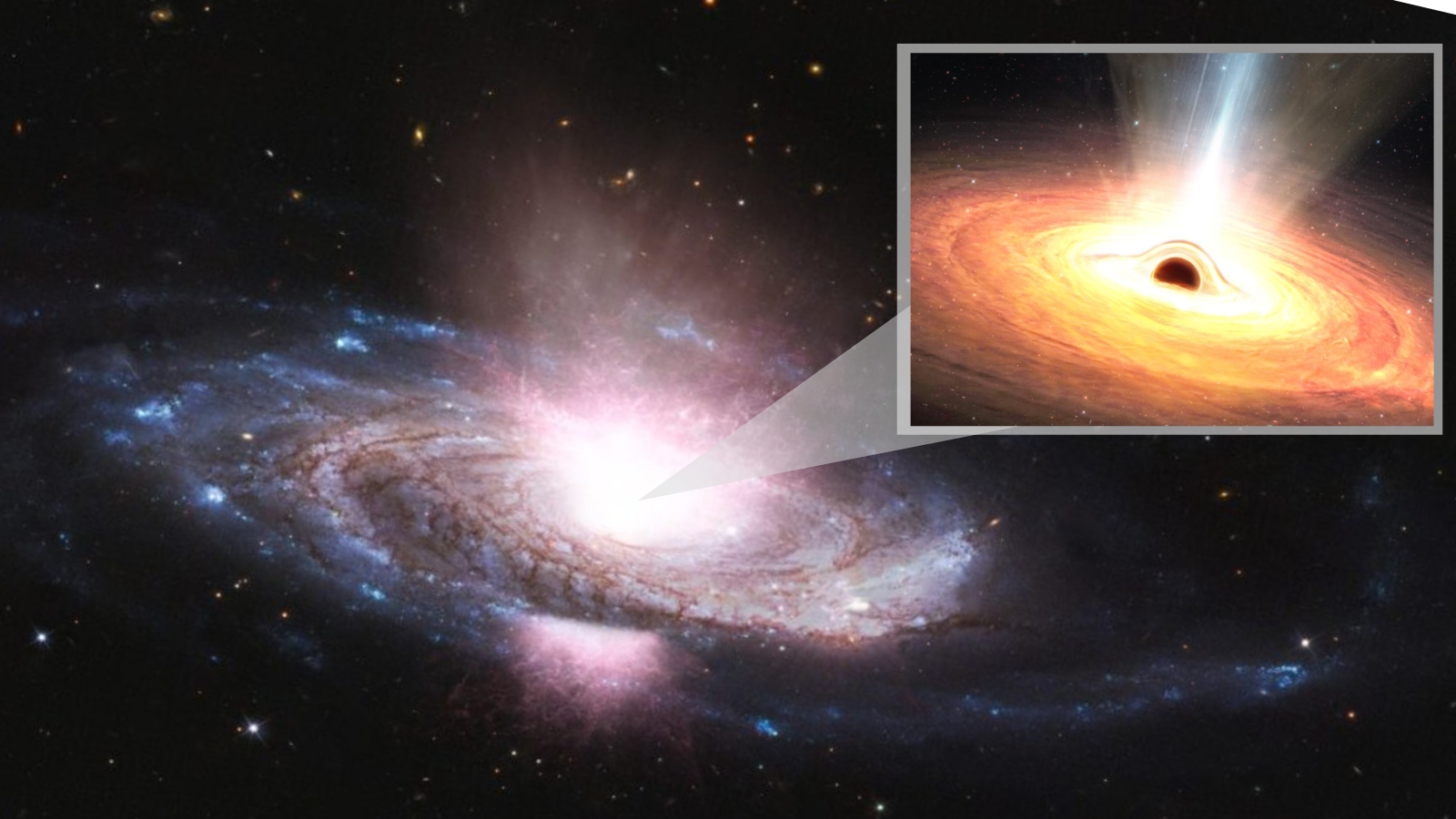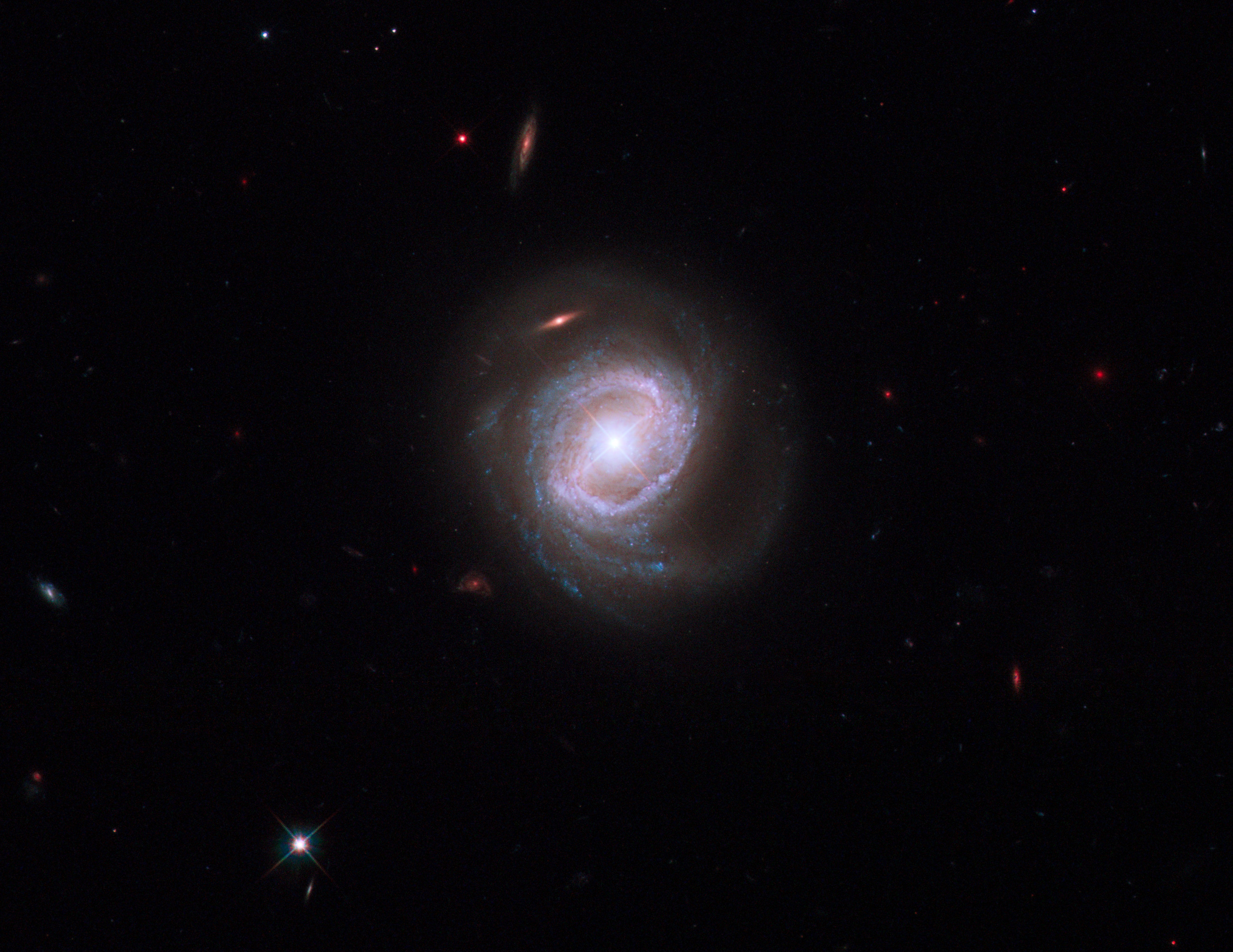
Astronomers have spotted a supermassive black hole throwing a temper tantrum on a galactic scale as it feeds, figuratively "flipping the table" and cutting off its parent galaxy's gas supply needed to birth stars.
The table-flipping behavior comes in the form of an ultrafast wind emerging from the lightly snacking supermassive black hole, which sits in a distinctly average galaxy. The galaxy is named Markarian 817 (Mrk 817) and is located 430 million light-years away in the constellation of Draco; the situation at hand was detected by the European Space Agency (ESA)'s XMM-Newton space telescope.
Supermassive black holes with masses millions, or even billions, of times that of the sun are thought to dwell at the hearts of all galaxies. In some cases, however, these cosmic titans are surrounded by disks of gas and dust called "accretion disks" that "feed" them.
When this is the case, the immense gravity of these black holes superheats the gaseous and dusty matter, causing it to glow. Additionally, powerful magnetic fields funnel matter that doesn't end up falling to the black hole to its poles, where the matter gets blasted out at near-light speeds. As a result of this turbulent activity, these regions, known as "active galactic nuclei," or AGNs, can often outshine the combined light of every star in the galaxies around them.
Related: Astronomers witness 18 ravenous black holes ripping up and devouring stars
In some cases, AGN-powering supermassive black holes exhibit even more drastic behavior, flipping over their entire cosmic dinner table by flinging gas in surrounding accretion disks outward in every direction. This results in "ultra-fast black hole winds."
When this happens, not only does the tantrum-throwing black hole deprive itself of gas to feed on, but it also drives gas away from its host galaxy, halting star birth over a vast region.
Previously, astronomers had only seen these ultra-fast black hole winds coming from extremely bright AGNs with ferociously feeding black holes.
"This is the first time we have seen ultra-fast winds expelled off the active galactic nuclei (AGN) disk around a supermassive black hole that is accreting at a considerably lower rate than the one at which we expect the activation of such winds," Elias Kammoun, team member and a postdoctoral fellow at the Sapienza University of Rome, told Space.com.
Prior to this discovery, Kammoun said, it had been commonly accepted that generating ultra-fast winds only happened in episodes that exhibited gas spiraling down the supermassive black hole at a very high rate.
"In this regime, a large amount of energy is released and radiated away, which is a key factor in driving disk winds," he continued. "Several pieces of evidence demonstrated that the activity of central black holes plays a key role in reshaping the host galaxy and affecting its evolution, what we call AGN feedback. However, the conditions in which this feedback can be triggered are still not very clear.
"Discovering ultra-fast winds in a moderately accreting source will make us reconsider the way we perceive winds in AGNs."
Black hole went silent before flipping the table
Mrk 817 had tipped off the astronomers that something dramatic was on the horizon when its AGN went extremely quiet. Normally, you'd expect it to be blasting out high-energy light, such as X-rays.
Miranda Zak, a graduate student at the University of Michigan and team lead, first spotted the strange interruption with NASA's Swift observatory, later following up with the more sensitive XMM-Newton. Ultimately, Zak found that ultra-fast winds emerging from the accretion disk at the heart of Mrk 817 were absorbing X-rays, effectively shrouding any signals emanating from the central supermassive black hole.
Then, further analysis of the X-rays from this AGN showed that the central region of Mrk 817 wasn't just sending out a single puff of gas, but was blowing a major gale across the accretion disk. And, per their observations, they can still see it doing so. These winds can last several hundreds of days and consist of at least three distinct components, each moving at a fraction of the speed of light.

"Identifying disk winds in supermassive black holes accreting at normal rates like Mrk 817 was not expected at all," Kammoun said. "The high accretion rate phase is supposed to be a brief phase in the life of the supermassive black hole. On the contrary, the accretion phase of Mrk 817 can last much longer thanks to its moderate rate."
He added that this has two major implications for our understanding of feeding supermassive black holes, as well as the AGNs they power.
Firstly, this implies that even lightly feeding supermassive black holes can expel winds powerful enough to reshape their host galaxies; they also appear to have lifetimes long enough to allow for such actions.
Secondly, if ultra-fast winds can emerge from regions around moderately accreting black holes, then such winds are probably more common than astronomers currently suspect. Thus, scientists believe these winds likely shaped many different galaxies, including some we're already aware of.
The discovery of winds from a quiet black hole lasting for a prolonged duration could someday also help answer an interesting question: Why do some galaxies like the Milky Way with quiet, lightly feeding black holes appear to have large, vast regions at their hearts where stars form in only very low numbers?
"There is still a lot to learn about Mrk 817 in particular and AGN winds more broadly," Kammoun said. "This discovery changes the way we look at AGNs. It will be crucial to know how many of the moderately accreting sources do actually launch winds. This will help us better understand how common they can be.
"I believe this is just the tip of the iceberg!"
The team's research was published on Thursday (Feb. 1) in the Astrophysical Journal.







